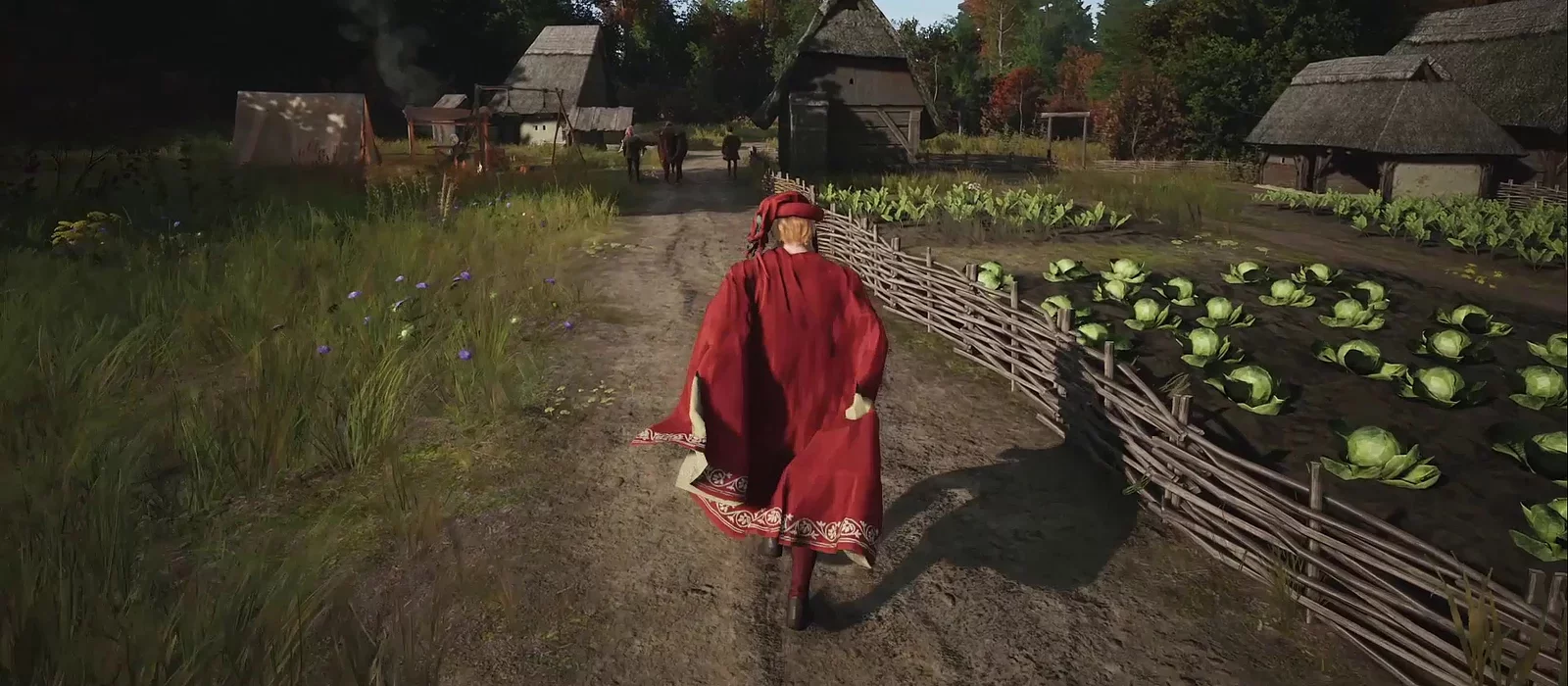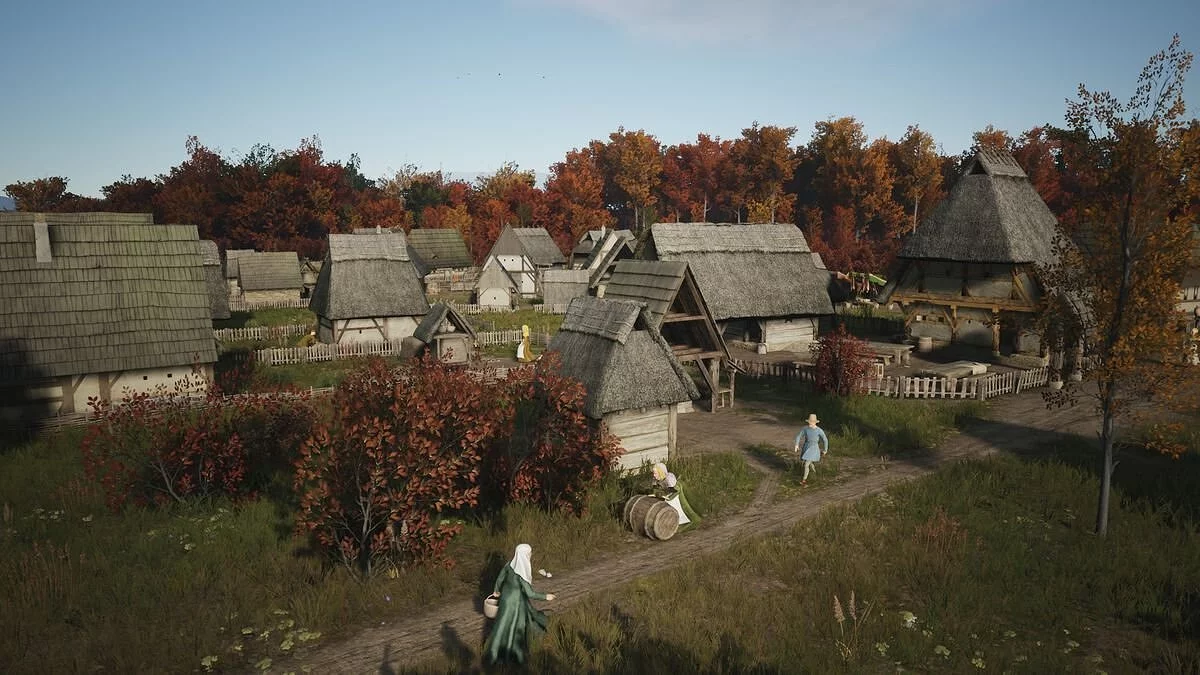How to Level Up Your Settlement in Manor Lords

The realistic strategy game Manor Lords has captivated players and received numerous positive reviews from critics. The game features diverse mechanics that allow you to develop your settlement from a small village into a large city. However, not all available options are intuitive. In this guide, we will discuss how to properly level up your settlement and what is needed for it.
What is Settlement Level
The settlement level indicator is familiar to anyone who has played strategy games. It shows the overall development progress and allows you to assess your current stage. The settlement grows fastest, of course, due to the number of residents. But to increase the number of subjects, you need to provide them with everything they need.
How to Increase Settlement Level
The level directly depends on the number of housing plots and their upgrades. Each plot has three stages of development, meaning you will have two upgrades available. The main nuance here is that you can only achieve a new stage if you meet the more complex needs of the residents. This way, you will have to develop the entire city, increasing the quantity and quality of not only residential houses but all other infrastructure as well.
There are a total of 7 settlement levels in the game. Each requires a specific number of buildings.
- Settlers' Camp — does not require any conditions, this is the initial stage;
- Small Village — 5 housing plots of level 1;
- Medium Village — 5 housing plots of level 1 and 2 plots of level 2;
- Large Village — 10 plots of level 1 and 5 plots of level 2;
- Small Town — 10 plots of level 1, 7 plots of level 2, and 3 plots of level 3;
- Medium Town — 10 plots of level 1, 10 plots of level 2, and 10 plots of level 3;
- Large Town — 30 plots of level 1, 20 plots of level 2, and 15 plots of level 3.
You might notice that at some development stages, the requirements partially overlap. This can be used to reduce the number of residential buildings and focus on their development rather than quantity. For example, if you need to transition from a small village to a medium one, you will still need 5 level 1 plots plus 2 level 2 plots. The game will count the condition as met if you simply upgrade 2 out of the 5 plots to level 2, rather than building two new ones.
How to Upgrade Housing Plots
Each of your housing plots can be upgraded in several ways. First, increase their overall level. This is necessary not only to enlarge the city but also for new resources and regional wealth accumulation. To see the list of requirements, just click on the plot. Usually, there will be something needed for everyday life.
To upgrade a plot from the first to the second level, you will need: access to water (well), a wooden church, one fuel vendor, two different food vendors, and one clothing vendor.
To upgrade a plot from the second level to the third, you will need: building materials (8 planks, 4 beams, 4 tiles), a well, a stone church, one tavern with a stock of drinks, one fuel vendor, three different food vendors, two clothing vendor stalls.
It is useful to build housing in close proximity to the market. This way, settlers will have quick access to everything they need. At the same time, wells, churches, and taverns can be at a distance, as accessibility does not play a significant role here.
The second type of housing plot upgrade is backyard expansion. This way, you can choose what the peasants will start producing on their own.
- Apple Orchard — requires 50 units of regional wealth to produce apples;
- Weaponsmith's Workshop — 4 planks, 10 units of regional wealth to produce helmets, chainmail, and plate armor;
- Bakery — requires 5 planks and 5 units of regional wealth to produce bread;
- Blacksmith's Workshop — requires 5 planks, 5 units of regional wealth to produce tools and weapons;
- Bowyer's Workshop — requires 4 planks to produce bows;
- Brewery — requires 5 planks, 5 units of regional wealth to produce ale;
- Chicken Coop — requires 25 units of regional wealth to produce eggs;
- Cobbler — requires 5 planks, 5 units of regional wealth to produce shoes;
- Goat Barn — requires 25 units of regional wealth to produce meat and milk;
- Carpenter's Workshop — requires 4 planks to produce wooden parts and shields;
- Tailor — requires 5 planks, 5 units of regional wealth to produce clothes, cloaks, and more;
- Vegetable Garden — requires 15 units of regional wealth to produce vegetables.
When we mentioned the number of clothing and food vendors, it is directly related to the expansions described above. Peasants will be able to sell the produced goods, which will ultimately help develop the city.
Other guides
- Beginners Guide for Manor Lords: Tips and Tricks
- Optimizing Manor Lords Graphics for Low-End PCs: How to Remove Blurriness and Increase FPS
- How to Make Weapons and Armor in Manor Lords
- How to Build a Manor in Manor Lords
- How to Get Clothing in Manor Lords: Where to Find Leather, Yarn, Flax, Shoes, and Cloaks
- How to Survive Your First Harsh Winter in Manor Lords
- How to Get More Families and Increase Approval Level in Manor Lords
- How to Breed Sheep in Manor Lords
- How to Solve the Lack of Groundwater in Manor Lords



